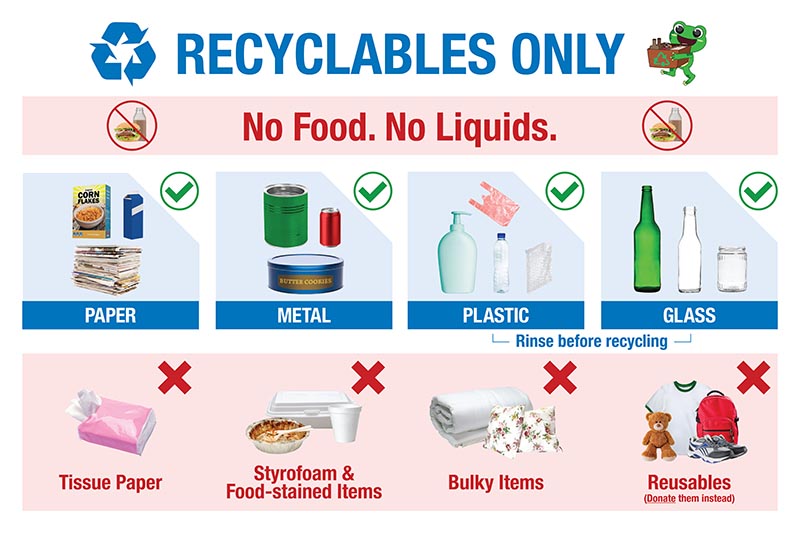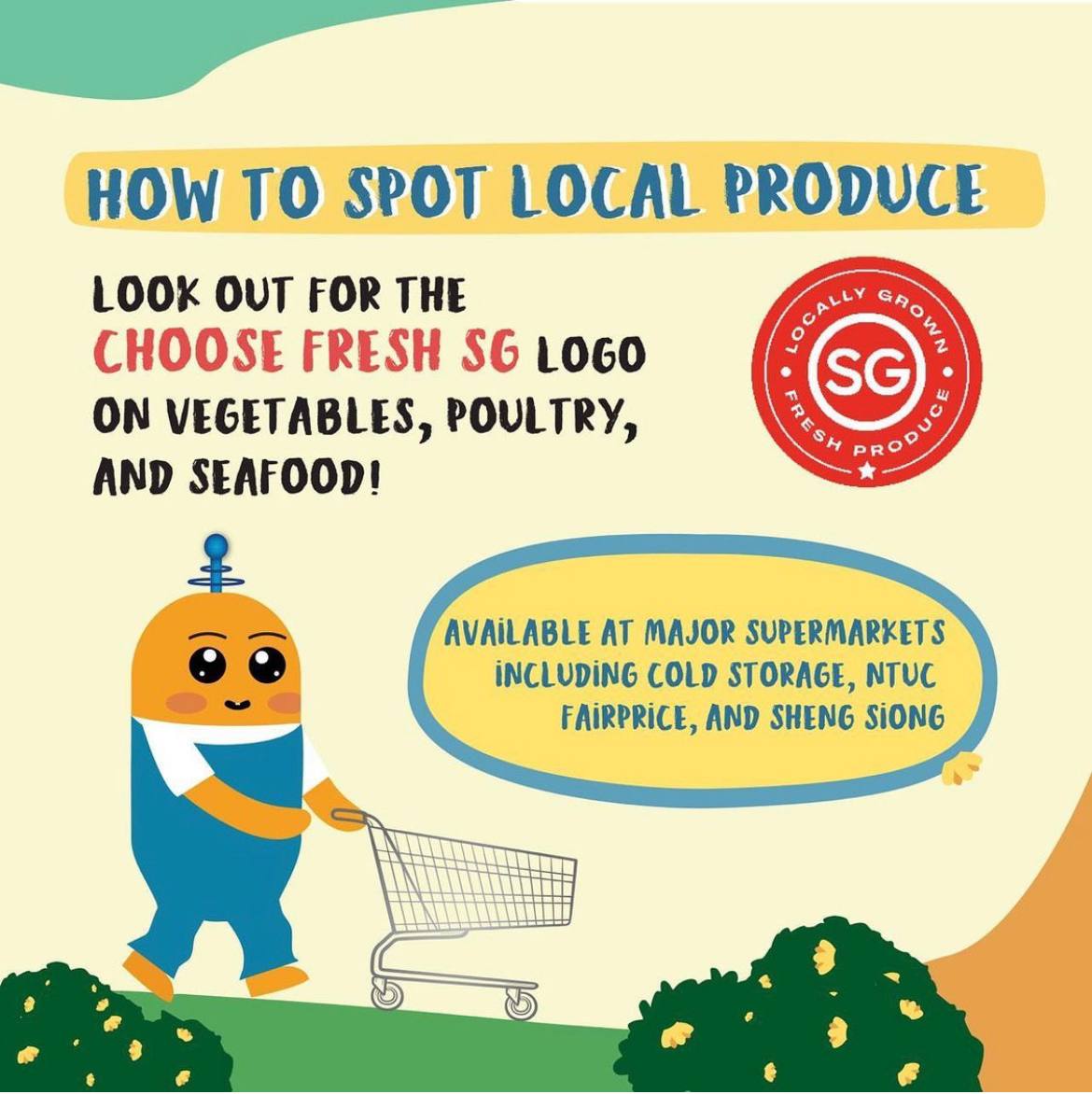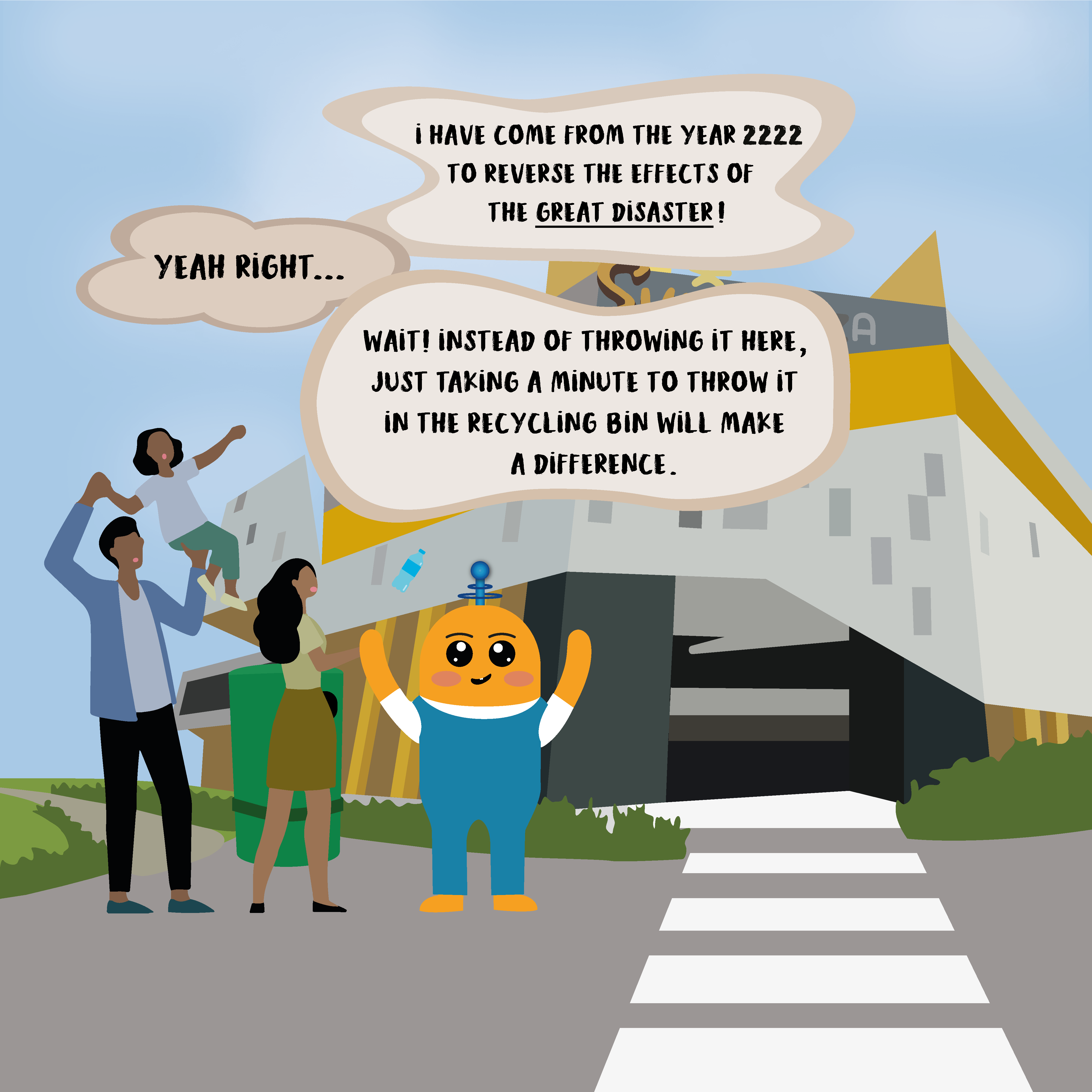It Only Takes A Minute To Green It
DESIREE SEAH talks about the “Minute To Green It” campaign by North West Community Development Council, which discusses the benefits of local produce, and green living habits we can inculcate to strive towards a sustainable future for our little red dot.
Car parks with open rooftops are used for urban agriculture in Singapore. Photo taken from Singapore Food Agency.
BY
Desiree Seah
Editorial Admin Manager
Hype Issue #55
Published on
July 30, 2022

An ongoing initiative by North West Community Development Council (NWCDC) that advocates for sustainability and green living in the North West is the “Minute To Green It” campaign.
Brought to you by a group of Year 3 Mass Communication Students from Ngee Ann Polytechnic, the “Minute To Green It” campaign shines a light on the importance of the 3Rs (Reduce, Reuse, and Recycle) and how quick and easy it is to practice green habits.
The campaign involves two adorable characters, Nova and Milli, set in a time-travelling storyline of going back to the past (the present) and reversing the effects of a potential environmental disaster.
Comic pages from the “Minute To Green It” campaign that show Nova going back in time to save the earth and revert the irreversible consequences of damaging mother nature.
Samuel Lim, 22, lead of the campaign, explains the role of Nova, “Nova treads across the perimeter of North Western Singapore and galvanises residents to incorporate green living habits into their daily lives, one minute at a time. Once he has successfully convinced the population to take action, he will transport back to a thriving, utopian future.”
Ms Sandra Zhang is a shining example of the type of citizen that the campaign is hoping to nurture.
Ms Sandra, 49, owner of Instagram page @monoandco, an account dedicated to zero waste ideas and plastic alternatives, makes a conscious effort to live sustainably by avoiding wastage and making things last longer. To her, green living can be as simple as reducing food waste, switching to a reusable drinking bottle and refusing single-use shopping bags.
According to Ms Sandra, integrating the 3Rs into your daily activities makes it easier to form sustainable habits.
“For example, before I leave my house for work, I always bring a drinking bottle and a set of reusable cutlery to avoid generating single-use plastic waste during lunchtime,” she says.
Prevention is always better than cure. ‘Reducing’ is a more efficient method of protecting the environment by simply not wasting its resources.
Before we learn how to reuse and recycle unwanted materials, reducing the usage of aforementioned materials will significantly reduce the amount of waste we as consumers generate on a daily basis.
The next term is ‘Reuse’, which can be accomplished by refusing. When you are taking away lunch or shopping for a new bag, think about what you currently own first. Are there any items that can be reused for the same functionalities as a new item?
Last but not least, when we can no longer reuse an item, we turn to ‘Recycling’ it. This last alternative of sorting out trash can be a meticulous process, but it does pay off in the long run in helping to achieve a greener city. During this last stage of properly disposing waste, it is pertinent to know what can or cannot be recycled.

An infographic often seen on blue recycling bins to indicate what items can be considered as recyclables. Photo taken from Towards Zero Waste.
NWCDC has organised many programmes, such as the Recycle @ North West program which educates and encourages residents to practice active recycling through a common platform at recycling points, and Green Homes @ North West, which encourages residents from all walks of life to achieve the standard of a green home by purchasing energy and water-efficient appliances.
If you are interested in finding out more about the NWCDC’s recycling efforts, you can read more here.
Additionally, “Minute To Green It” ran two roadshows at Ngee Ann Polytechnic and Causeway Point @ Woodlands to show residents how to recycle properly through their Recycling challenge. The initiative also rolled out an Instagram filter game to help them achieve their goal.
The campaign also shared educational content on social media on green living, including how to reduce one’s carbon footprint, and tips and tricks on saving electricity so as to build a green and sustainable North West.
Striving towards a sustainable Singapore
Every lifestyle decision and action we make will affect the earth we live in in the future. To ensure that we live in a cleaner and greener environment, we must inculcate good habits and practice sustainability in our lives.
Singapore has aspirations that green living will become a norm in our society by meeting key targets set out in the Singapore Green Plan like expanding nature park lands, reducing amounts of waste and consumption, increasing green energy supply systems, as well as growing food locally .
These are all steps taken to strive towards becoming a Zero Waste nation.
Zooming into the Singapore Green Plan 2030, there are the ‘30 by 30’ initiatives, some of which include a 30 per cent reduction of landfill waste, and locally and sustainably producing 30 per cent of our nutritional needs by 2030.
Local Produce in Singapore
In order to produce 30 per cent of our nutritional needs by 2030, the target shines light on the local farming scene in Singapore which produces organically grown food for the nation.
Being sustainable does not solely mean practising the 3Rs, it also implies supporting local produce.
For a country that prides itself in its many delicacies, especially chicken rice, the news of Malaysian Prime Minister Ismail Sabri Yaakob announcing the temporary ban of chicken exports to Singapore in June shocked the entire of Singapore.
While some stalls resorted to alternatives to live chicken or price hikes to sustain their business, the export ban of chickens from Malaysia has caused other poultry sellers to temporarily shut down their stalls.
In times of a crisis like this, it raises the question: How is Singapore going to effectively combat the potential shortages of food supply in the near future?
Singapore’s limited resources and high dependency on foreign imports of goods
Chicken is just one example of the many staple ingredients that are incorporated into many of our local delights.
According to the Singapore Food Agency (SFA), over 90 per cent of the food consumed in Singapore relies on imports from more than 170 countries. It will be a challenge to override these numbers in a short time in the case of any future emergencies, like the sudden halt of chicken imports.
Moreover, with such a high population on a tiny island, there seems to be no way out with the constant demand for food and the depleting of our already limited natural resources.
However, Singapore has more than just frozen chicken to offer Singaporeans craving a plate of chicken rice.
Located in the north-west region of Singapore, there are several farms that produce organic ingredients.
Some of these farms include Ground-Up Initiative, which educates visitors on the importance of appreciating the food on our plate all the while learning about the significance of having a local harvest.
The first benefit of this is having more control over good quality. Fresh produce from local farms has to meet the strict set of farming regulations set by the Singapore government. This ensures that the local produce sold on the market originates from ethical methods of breeding, farming, and growing.
Furthermore, purchasing locally grown produce significantly reduces the amount of greenhouse gas emissions used for transportation as it travels a much shorter distance to reach your plate.
How do we as locals support local produce?

Poster on spotting local produce in supermarkets like NTUC and Sheng Siong by North West CDC’s “Minute To Green It” Campaign. Photo taken from @northwestcdc on Instagram.
As a consumer, there are many actions we can take to support local produce and improve our consumption patterns. One way is to look out for the SG Fresh Produce (SGFP) Logo on products the next time you are out shopping for groceries at supermarkets. To learn more about the SGFP logo and the different kinds of approved local produce, you can visit the SFA website.

Sweet basil grown by Ms Sandra along her corridor garden, an ingredient that she often uses in her preparing meals. Self-grown herbs and vegetables are also one method of having a sustainable consumption pattern. Photo taken from @monoandco on Instagram
Ms Sandra also explains how she makes an effort to choose local produce when grocery shopping.
“I try to buy fresh produce from the wet markets; I will ask the stallholders to recommend our vegetables from local farms first. The produce quality is great! The local vegetables such as spinach and bok choy are fresher as the supply chain is shorter. The vegetables keep longer too, but I am careful not to overstock since the produce is best consumed fresh,” Ms Sandra says.
“The local produce might be slightly pricier, but it’s better than over-buying cheaper [foods] and throwing them away after they expire.”
The local produce might be slightly pricier, but it’s better than over-buying cheaper [foods] and throwing them away after they expire.
Locally grown produce may fare slightly on the pricier side, but to Ms Sandra, it is more worth it in terms of quality, environmental impact and value.
It only takes a minute to choose local, just as it only takes a minute to make a positive impact on our environment.
Environmental efforts are often easily dismissed as they don’t have immediate and fulfilling results. This lack of instant gratification is what turns people away from making a conscientious effort to save the environment. Even if it is just a minute of your time, or a tiny gesture of effort put into green living– “Minute To Green It” hopes to show that the actions you take today will have a butterfly effect in the future.
“Green living can start within one’s own home, and North West residents who participate in our ‘Green Homes @ North West’ programme can get rewarded up to $300 worth of shopping vouchers! It’s always easier to make a lifestyle change when you see the people around you doing it, so what better way to start than to do it with those living with you under one roof,” Samuel says.
Under the ‘Green Homes @ North West’ programme, residents who meet certain green living requirements can earn vouchers. More details can be found at: https://www.cdc.gov.sg/northwest/contentdetails/green-homes-@-north-west.
Join Nova and Milli on Instagram (@northwestcdc) as they embark on their adventure from the future back to present reality, to save the earth from being completely depleted of resources in time to come.
You can also find out more about this campaign on Facebook (North West CDC), and TikTok (@minutetogreenit).





Thanks for sharing. I read many of your blog posts, cool, your blog is very good.
Thanks for sharing. I read many of your blog posts, cool, your blog is very good. https://accounts.binance.com/bg/register-person?ref=53551167
instrumental christmas jazz music
Thanks for sharing. I read many of your blog posts, cool, your blog is very good.